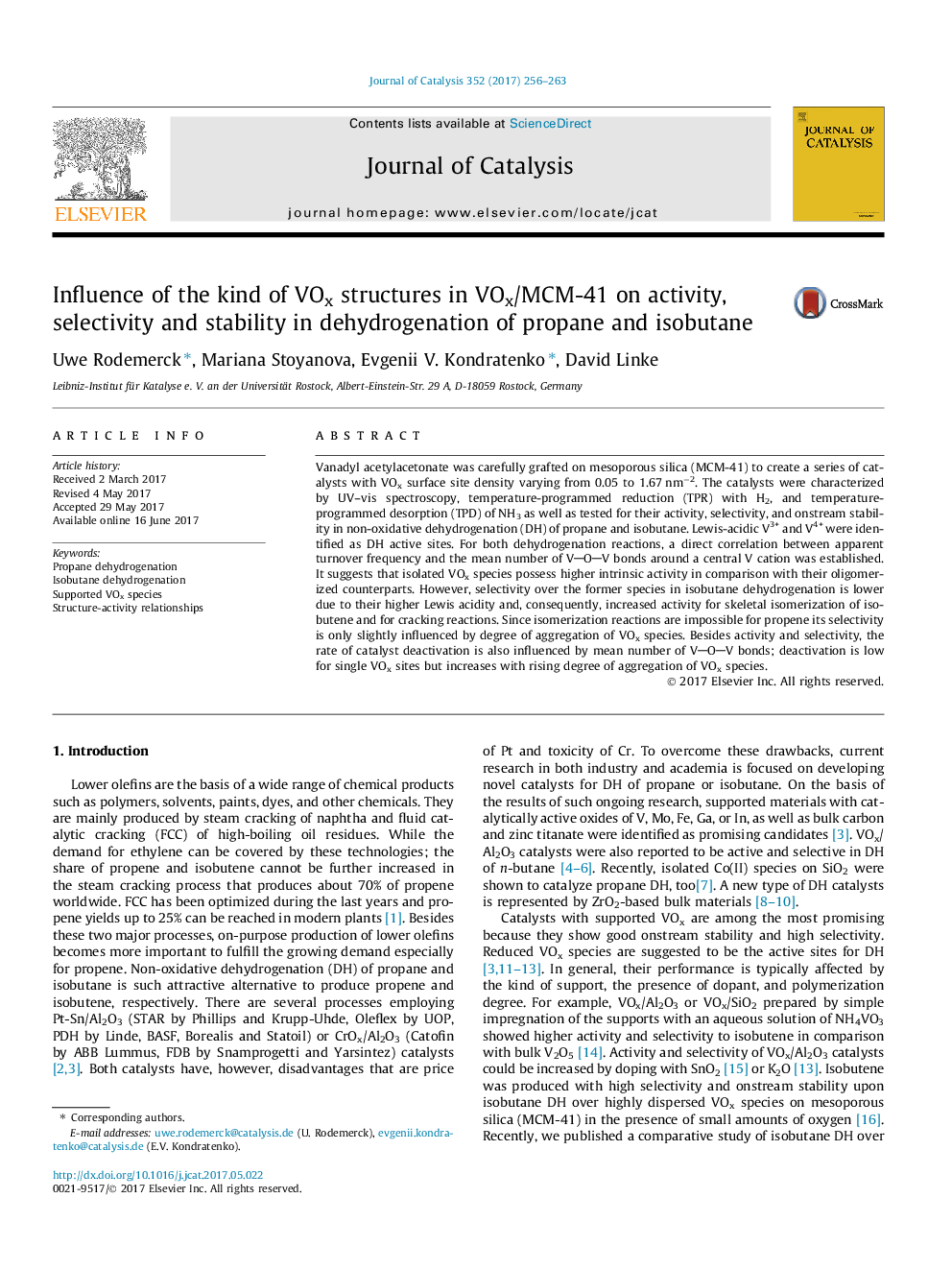| Article ID | Journal | Published Year | Pages | File Type |
|---|---|---|---|---|
| 6455384 | Journal of Catalysis | 2017 | 8 Pages |
â¢VOx on MCM-41 with surface site density of 0.05-1.67 nmâ2 was prepared.â¢The catalysts were tested in dehydrogenation of propane and isobutane.â¢VOx species with Lewis-acidic V3+ or V4+ were identified as active sites.â¢TOF depends on aggregation degree of VOx species.â¢Isolated VOx species are most active and resistant against deactivation.
Vanadyl acetylacetonate was carefully grafted on mesoporous silica (MCM-41) to create a series of catalysts with VOx surface site density varying from 0.05 to 1.67Â nmâ2. The catalysts were characterized by UV-vis spectroscopy, temperature-programmed reduction (TPR) with H2, and temperature-programmed desorption (TPD) of NH3 as well as tested for their activity, selectivity, and onstream stability in non-oxidative dehydrogenation (DH) of propane and isobutane. Lewis-acidic V3+ and V4+ were identified as DH active sites. For both dehydrogenation reactions, a direct correlation between apparent turnover frequency and the mean number of VOV bonds around a central V cation was established. It suggests that isolated VOx species possess higher intrinsic activity in comparison with their oligomerized counterparts. However, selectivity over the former species in isobutane dehydrogenation is lower due to their higher Lewis acidity and, consequently, increased activity for skeletal isomerization of isobutene and for cracking reactions. Since isomerization reactions are impossible for propene its selectivity is only slightly influenced by degree of aggregation of VOx species. Besides activity and selectivity, the rate of catalyst deactivation is also influenced by mean number of VOV bonds; deactivation is low for single VOx sites but increases with rising degree of aggregation of VOx species.
Graphical abstractDownload high-res image (64KB)Download full-size image
